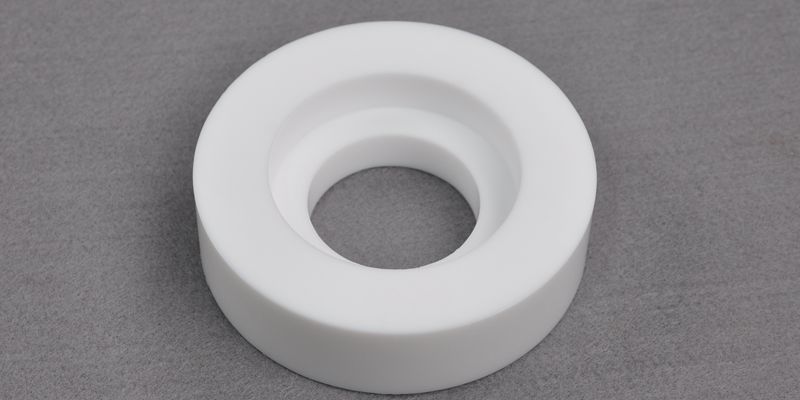- November 25, 2022
Teflon or Polytetrafluoroethylene (PTFE) is a chemically inert plastic material with low friction with wide industrial applications. Alongside other engineering plastics like ABS and PVC plastic, most manufacturers that work with Teflon use machining techniques.
This article will extensively discuss machining processes suitable for working with Teflon. Aside from that, it will talk about the material properties, advantages, and applications of custom Teflon parts.
What is Teflon/PFTE Material?
Teflon is a popular brand name for Polytetrafluoroethylene (PTFE), a thermoplastic fluoropolymer. Accidentally discovered by Dr. Plunkett, the engineering plastic is resistant to chemicals such as acids and alkalis. Furthermore, it has a low friction coefficient, making it a useful material in industries such as automotive and medical.
Properties of Teflon
Many Teflon properties come from the nature of the thermoplastic as a fluoropolymer (consists only of fluorine and carbon). For example, it has a white solid appearance at room temperature. Other properties of the plastic material include:
- Chemical resistance
- High-insulating property
- UV resistance
- Low coefficient of friction
- Low dielectric constant/dissipation factor
- Anti-adhesive
- Fatigue resistance
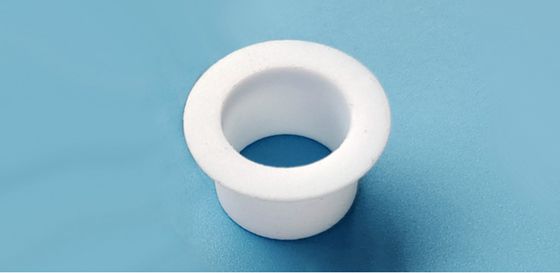
Different Grades of PTFE
Several Teflon grades are applicable in several industries using plastic machining. Some come with a brand name, and they all have unique properties. Common Teflon grades employed in plastic fabrication include:
- Virgin PTFE has high chemical resistance, flexural properties, and electrical properties;
- Pigmented PTFE that has better visibility;
- Chemically Modified PTFE which has less creep, smooth surface, and improved permeation resistance;
- Glass-filled PTFE are applicable in making parts that require high compressive strength and excellent wear and chemical resistance;
- Peek-filled PTFE is known for its compressive strength.
Applications of Teflon Material
Teflon is an important material in several industries. Below are common examples of custom Teflon parts:
- Important material in manufacturing pipework;
- It is suitable for making anti-friction devices;
- An important material in coating medical parts and equipment;
- Used to make the lining of laboratory appliances.
Different Machining Processes for Teflon/PTFE
There are several machining processes to manufacture custom Teflon parts. Below is an overview of the process and how to optimize it further.
Mechanical/Manual Machining
This machining process does not involve computerized controls, and as a result, they are less accurate and precise. They are suitable for machining PTFE parts that do not require complex design, tight tolerance, or manufacturing process. Mechanical machining processes are applicable in DIY.
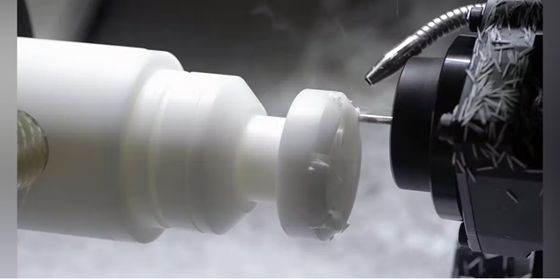
CNC Machining
CNC machining is the most common process for making custom Teflon machined parts. It is a subtractive process that utilizes computer-controlled tools to remove parts of the Teflon material to form the desired part. PTFE machining comprises the following techniques:
1. CNC milling uses a milling machine to remove materials from the Teflon to form the machined parts. CNC milling machines allow you to rotate and move along several axes. As a result, they are accurate and precise. This machining technique is applicable n making Teflon parts with rough edges.
2. CNC turning involves holding and rotating a workpiece and feeding it to the CNC turning machine to create PTFE parts with hollow shapes.
3. CNC drilling involves using a drill to make a hole in the Teflon part. There are several considerations about using CNC drilling bits. For example, the shaft must allow proper evacuation. Also, the drill should be perpendicular to the workpiece to minimize drifting
4. CNC Turn-Mill Machining combines turning and milling processes suitable for making complex Teflon parts. While this might not be comparable to multi-axis machining, they can deliver a few complex parts, such as a hollow part with rough bottom features.
5. Multi-Axis / 5-Axis Machining is the advanced method for machining Teflon to make complex custom parts. It uses a multi-Axis and multi-tool setup to machine PTFE parts to improve the accuracy and precision of the end product.
Considerations and Tips for Machining Teflon
Teflon is a unique material for machines. As a result, it is important to understand the properties of the materials for machinists. Below are a few tips to consider when working with the material:
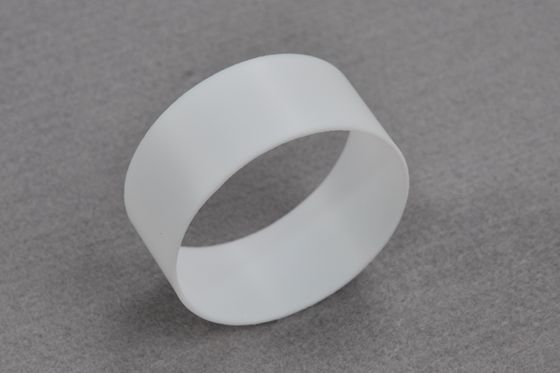
Tight Tolerance
Teflon machining comes with an increase in stress creep and a high expansion coefficient which makes achieving tight tolerance harder. A proper solution to this is to use coolants to achieve the best tolerance and surface finish.
Softness
Teflon is also a soft thermoplastic which makes machining easier. However, It is also easily affected by tool chatter in machining due to the extreme lack of rigidity. However, you can introduce materials that can reinforce it or use a better Teflon grade.
Deformation Under Extreme Pressure
Ensure you account for the fact that the Teflon will deform under extreme pressure during machining. Aside from that, you can tailor this to the custom part, such as removing tight tolerances and complex features, to ensure the material is suitable.
The Shape of Custom Teflon Parts
Teflon is unsuitable for making unbalanced parts such as bow-shaped or disc-shaped Teflon parts due to the softness and heat generation by the many machining processes.
Other Tips for Machining PTFE
- Use a cemented carbide tool with a polished top surface to improve the surface finish and protect the tools;
- Support the PTFE material to ensure accuracy during the machining process;
- Use the right machining tool to improve chip clearance and prevent clogging;
- Use bead blasting to get a smoother surface for the Teflon part and remove irregularities.
Why CNC Machining is a Better Method for Manufacturing Teflon Parts?
We rarely hear of 3d printing or injection molding being used to generate Teflon parts. But CNC machining is the common method due to the reasons listed below:
Decomposition Before High-Temperature Melting
PTFE has a high melt viscosity and is very sensitive to heat in the high-temperature amorphous state, so it may decompose before melting. Most importantly, PTFE above 250°C releases some toxic gases, which can have a bad effect on both the operator and the user of the product. So, 3d printing and injection molding both involve high temperatures and they are not the right method to process Teflon.
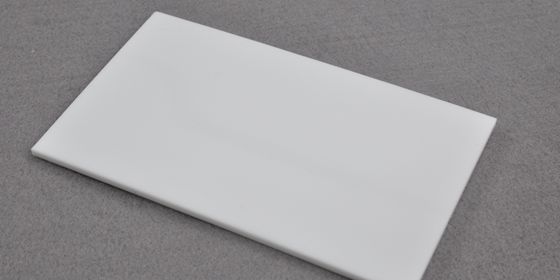
Fewer Defects and Greater Accuracy
CNC machines are autonomous, i.e., they do not require human intervention, and there are fewer errors due to human operators. Also, unlike other manufacturing processes listed above, there are lesser chances of defects during the manufacturing process and an increase in repeatability. Repeatability continues unless there is a deliberate change in the CNC machine programming language
Generation of Heat
CNC machining and most manufacturing processes generate heat during the machining process due to the movement of the tools. Therefore, when working with teflon material, there should be a cooling system to cater to such heat generation. The material is very heat sensitive, and the absence of a cooling system can lead to defects such as warping during the machining process
Suitable for Complex Shaped Parts
CNC machining, especially multi-axis machines, is suitable for accurately manufacturing complex parts. This is an important attribute that places CNC machining in precision Teflon machining.
Application of PTFE Machined Parts
The process’s accuracy requires using machined Teflon parts. Below are some applications.
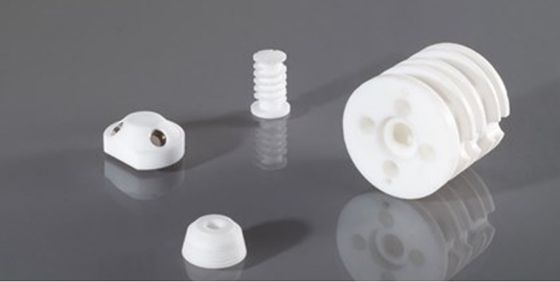
Automotive Industry
The automotive industry uses machined Teflon parts due to their accuracy and precision in the machining process. Common PTFE applications include gears and valves.
Medical Parts Industry
Teflon machine parts are widely applicable in medical part manufacturing due to their flexibility and chemical inertness. They are biocompatible because they can maintain their structural and chemical stability when implanted in the body. Examples of PTFE machined parts used in making medical parts are valves and needle cases.
Food Processing Industry
Teflon is also suitable for food processing due to its chemical inertness. As a result, there is no bad reaction to the food. For example, it is applicable in making components of blending food machines.
Aerospace Industry
Teflon machine parts are also applicable in the aerospace manufacturing industry due to their mechanical properties, such as strength and low friction, and more to the accuracy and flexibility of the CNC machining process. Common Teflon parts made using the process include components and coating of the anti-galling system.
Alternative Materials to Teflon
Aside from Teflon, there are other materials you can substitute when working on other projects. Below are the common ones and their comparison to Teflon:
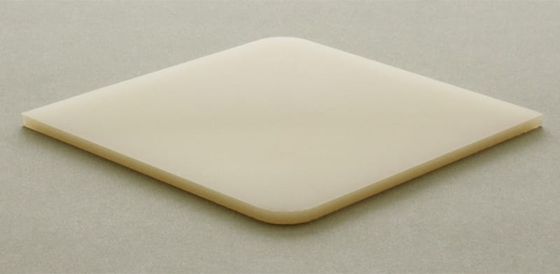
Ethylene Chlorotrifluoroethylene (ECTFE)
ECTFE is a semi-crystalline fluoropolymer and a copolymer of ethylene and chlorotrifluoroethylene. Like Teflon material, it is a fluoropolymer. However, unlike Teflon, it has better chemical and corrosion resistance. As a result, it is an important alternative for making parts that require such properties.
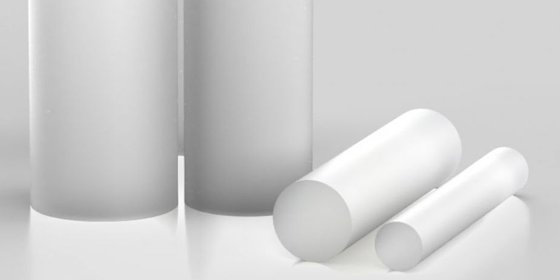
Perfluoroalkoxy (PFA)
Like PTFE, PFA is also a fluoropolymer. The material is similar to PTFE in terms of chemical resistance but is softer and less abrasion-resistant. As a result, this reduces its use in structural parts. However, unlike Teflon, PFA is not often used for processing.
Polychlorotrifluoroethylene (PCTFE)
PCTFE is another Teflon material alternative. Unlike PTFE, it is a chloro fluoro polymer. Properties of the material include a high level of water resistance and the lowest water vapor transmission rate of any plastic.
WayKen Offers Teflon/PTFE Machining Services
Teflon machining can be challenging compared with other plastic machined parts. At WayKen, we offer one-stop machining services for making TEFLON/PTFE machined parts. Below are the services we offer.
-DfM feedback: With DfM feedback, we can ensure that the part you submit is manufacturable. Furthermore, we also analyze the part for an easier and less expensive manufacturing process.
-CNC machining: We offer several machining processes such as milling, turning, and multi-axis machining for a better custom Teflon/PTFE machined with tight tolerances.
-Part Finishing: We also offer part finishing processes for removing imperfections or burrs in Teflon machined parts and other finishing options such as polishing, bead blasting, anodizing, and painting.
You can trust WayKen for professional machining services and get the high-quality product you desired. Feel free to contact us and let’s start a new project!
FAQs
Is PTFE thermoplastics or thermosets?
Teflon is a thermoplastic. This means that when heated, it will melt, solidify when cooled, and the process continues. This is unlike thermosets, such as phenolics, epoxy, and polyurethane, which will remain “solidified” in the form.
What’s the difference between PTFE and Teflon?
Both materials are the same. However, Teflon is the brand name of the PTFE material.
What are the limitations of Teflon machining?
The limitation of Teflon machining is based on the matorrals property. For example, it has a low density and softness of PTFE. As a result, you will need the right machining tool. Furthermore, its high-stress creep and expansion coefficient makes it difficult to achieve tight tolerances.

